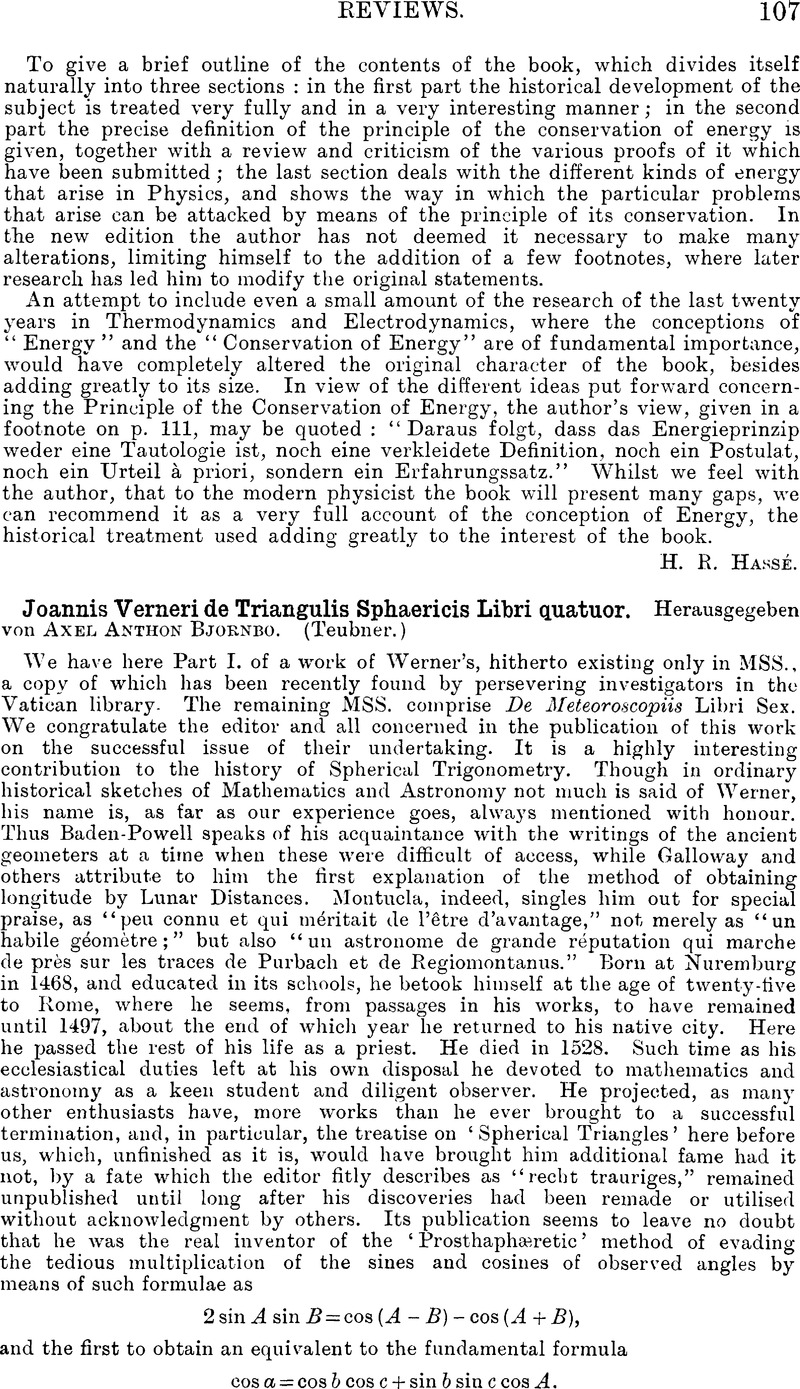No CrossRef data available.
Published online by Cambridge University Press: 03 November 2016

* Though it is generally stated that the use of sines was not substituted for that of chords until the middle ages, it may be noticed that Menelaus himself, by the use of the ‘chord of double the arc’ (or ‘nadir of the arc’ as he called it) was enabled to extend his theorem on the transversal of a plane triangle to that of a spherical triangle, almost as neatly as Werner. Neither put it into the modern form. The student now generally meets the property of the plane triangle some time before his introduction to spherical trigonometry, whose needs led to its invention, and the analogous theorem for spherical triangles gets an independent proof. But Werner’s proof (possibly following that of Menelaus) is worth notice. Project the spherical triangle ABC into the plane triangle ABC, and the traversal are DEF into the transversal straight line def. Then by the plane theorem,
Af Bd Ce=fB dC. eA.
But, Bd/dC= sin BD/sin Dc, etc.;
sin AF. sin BD sin CE-sin FB sin DC sin EA.
† Montucla’s form for Reymers Bär. [Ed.]
‡ There seems to be an error in the editor’s reference to Montucla’s Histoire des Mathématiques, I. Paris, 1758. It should be to the second edition (1799-1802).